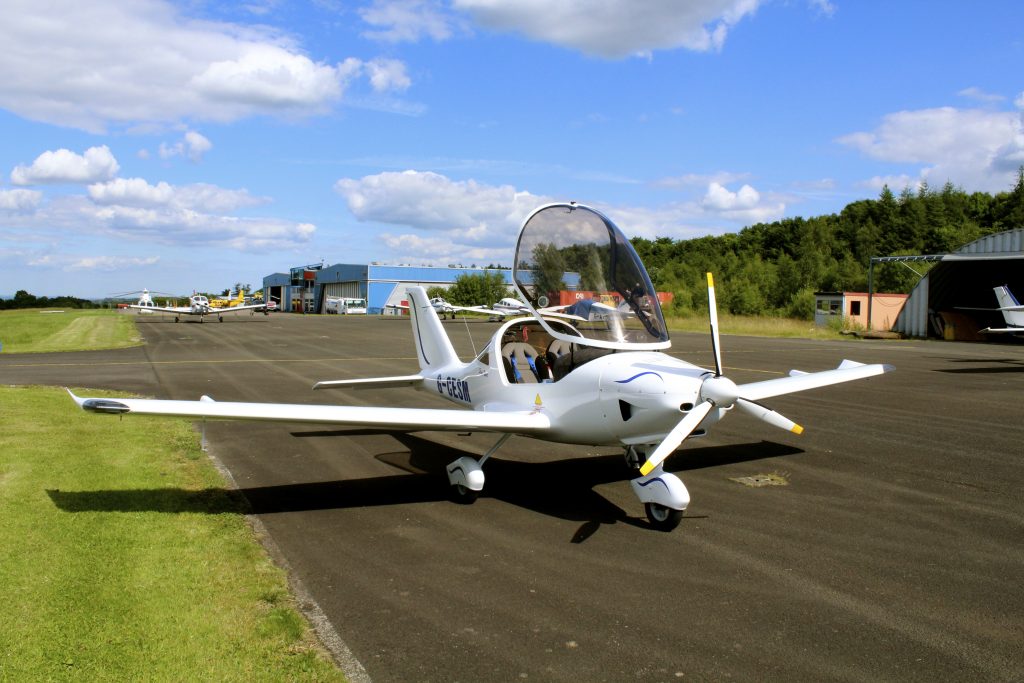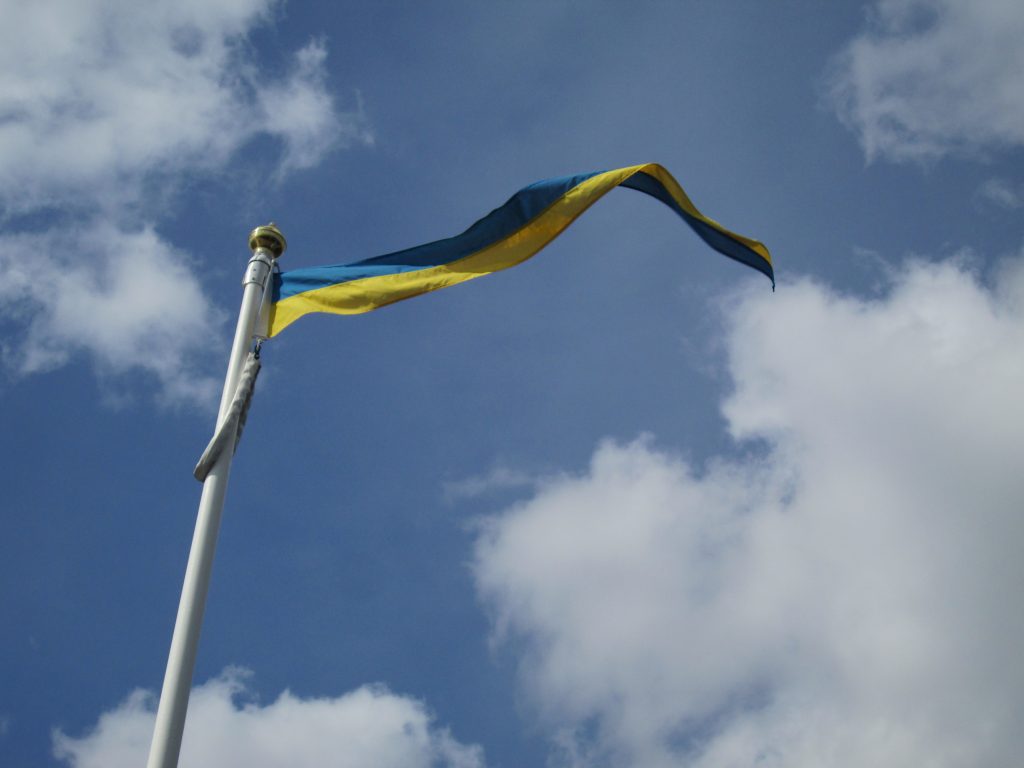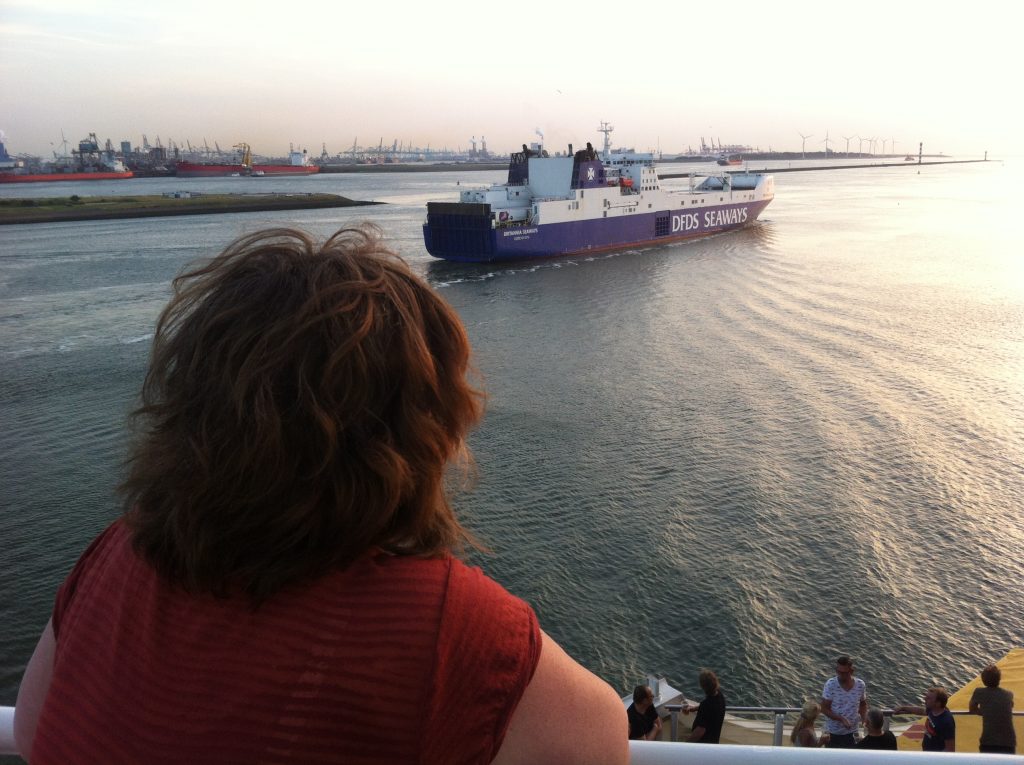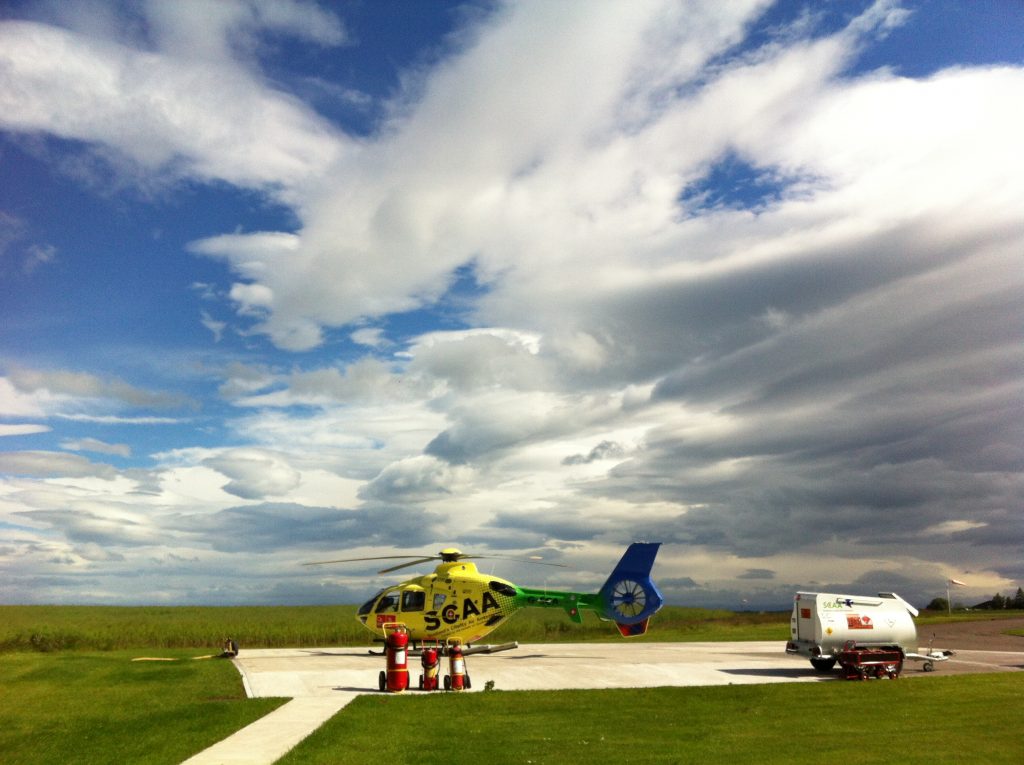In Sweden. Not Scotland. Random picture of a snowy air park house.
…picture taken by Alexander and forwarded. They live there year round.
Picture also supposed to be put up at Christmas. Only 12 days late. It’s now January so Happy New Year!
Adventures with aircraft, and other random stuff…
Ugh. I’ve been off work for a few weeks now. Felt lethargic, no appetite and unable to do anything. Now, the folks at work would say that this is the normal state of affairs but I was also shivering and boiling at the same time and waking up in the middle of the night in a massive sweat with soaked sheets. From sweat.
This all started the same evening that we watched “The Pacific” on telly. Episode One was set on Guadalcanal…John Basilone, Bob Leckie and the rest of the US Marines were fighting not only the Japanese, but also malaria, dysentry, and various other junglenastinesses (Yay! New word.) As I lay in bed sweating and freezing I was sure that I had caught malaria from the TV, especially as I was deliriously half dreaming that I hadn’t put enough top cover on my bunker and I was about to get mortared any second.
It wasn’t malaria, just some sort of viral infection. My aviation medical examiner and GP both recommended a couple of weeks off to recover. It has been a slow process, and I’m only just getting back to full energy, appetite and interest in anything other than sleep. It looks like I’ll be back at work just in time for my block of shifts covering Christmas. Sting and Eindecker flights should start again too – depending on the weather as always.
Normal service will be resumed soon.
…and I’ve just realised, I couldn’t have caught malaria from the TV. They were actors. ACTORS!
Early November…light winds and not too cold. Just right for a quick patrol in the Eindecker replica. The good thing about this aircraft is that I’m rarely without some good pics that other people have taken!
Here we are on departure from runway 27 at Perth, just starting the early right turn to avoid the trees ahead. The climb performance from the 40hp engine isn’t exactly sparkling, so I like to route over open fields rather than the woods. In summer the open fields also produce good thermals to aid the climb.
The photo was taken by Jim of the Scottish Aero Club, who was at the holding point in his flexwing microlight as the mighty Eindecker thundered/sedately tootled past (delete as applicable). Once he took off I was able to manoeuvre into position for his passenger, the talented photographer Wallace, to get a shot. Jim had seen me turn towards them and held course while I approached. Wallace must have been sitting there drooling and enjoying the view when he suddenly shouted “Fokker!” and was only able to get one picture before a hail of imaginary bullets sent them spinning to their doom in the fields below.
Having dispatched the Tommies we continued on patrol, doing the usual local route of crossing the (200 foot electricity) lines to Stanley, patrolling up the river and crossing back over the lines at Strelitz Wood. Yep there’s a germanic sounding bunch of trees in Perthshire. Apparently it’s named after Queen Charlotte of Strelitz, wife of George 3rd.
The flight also tested the new 8.33 spacing handheld radio in combination with the Campbell Classics leather helmet.
(I like this photo so much I’ve used it twice…)
With the previous radio the helmet was plugged into the aircraft intercom and was picking up a lot of interference from the ignition system. The new setup plugs the helmet directly into the radio and works much better. My ears are no longer bombarded with noise very time we go flying. The radio clips onto a mount on the cockpit sidewall. On landing I was able to unclip it and took it flying in the Sting as a backup.
After 40 minutes flying around in the Sting with the heater on full blast I had just about thawed out. The little open cockpit replica is great fun but only for short trips of 30 minutes at a time – especially in November.
Last Sunday started off as a light wind day and I briefly thought about getting the Eindecker out again for a mid-morning jaunt before the wind got up. Then I realised that flying a WW1 German fighter around was probably not a good idea on Remembrance Day while all the parades were going on…
October has flashed past…a trip to the simulator, a trip to Sweden, storm Ophelia, busy at work.
Finally got to drag the aircraft out when the month was half over. This is what 9 circuits of the airfield looks like on the Skydemon trace
Half flap landings, full flap landings, glide approaches etc etc. Got a bit dizzy there. Going for a lie down…with work from now until November, October will have been a quiet month on the Sting front…
Following hot on the success of the trip to the airport café in Carlisle, we decided on another aerial gastronomic adventure, this time to the west coast of Scotland and the airfield at Oban, with several eateries within walking distance. The airfield is situated on the coast at North Connel and the bridge over the Falls of Lora. It is almost due west from Perth so the route takes us past Perth Racecourse at Scone…
…and towards Crieff with the ground slowly rising…
…and getting a little more rugged, then some serious hills with only a few spots for a forced landing if we have engine trouble…
Some pretty awesome scenery on the way west. This is Loch Awe. See what I did there? Loch Awe. Awesome.
…and finally to the west coast, with all its islands and hills.
The view of Oban airport from above shows the north/south runway, the bridge at Connel and the Falls of Lora – that’s the ruffled bit of water to the right of the bridge in the photo below. Due to the underwater topography the incoming and outgoing tides create some fantastic white water standing waves. You can surf or kayak and stay in exactly the same location.
Also visible from above is our lunch stop at the Oyster Inn. It’s the blue building at the mid point of the bottom edge of the picture.
I’ve been to the Oyster Inn before! Those skid marks are NOT mine, just in case you were thinking of asking…
The southerly runway was in use at Oban and after landing we were directed to parking spot six, with Loch Linnhe, Lismore island and Mull in the background. Then it was another £15 landing fee and the walk to the pub.
It took about 25 minutes to walk to lunch, would have taken less time but we (obviously) had to stop for photos at the bridge. That’s the Falls of Lora behind us. Not a lot going on as it was slack water at the time.
The Oyster Inn does a great fish chowder, we foolishy ordered a toastie as well. Definitely not required. The giant square bowl was more than enough for two.
For those youngsters out there, who are of the opinion “pictures or it didn’t happen!” – here’s a picture of a bowl of soup…
Full of chowder we took off from Oban, turned north and took a different route home. Past some serious hills…
…up Loch Linnhe to Fort William. Brenda’s brother Andrew is somewhere in this shot. In the distance is Loch Lochy and beyond, Loch Ness.
We followed the route of the Fort William to Glasgow railway line to take us back east. Here it is climbing up the eastern side of Loch Treig before turning the corner onto Rannoch Moor
Corrour station:
From Corrour the distinctive shape of Schiehallion was visible in the distance beyond Loch Rannoch. It’s over 3000ft high and can be seen from Perth airport so it’s like a friendly beacon showing the way home.
This is Loch Ericht, looking north. The top end is just by the A9 trunk road connecting the Highlands and the rest of the world.
The landscape started to become more familiar again as we approached Pitlochry…
…and soon we were overhead and descending to land.
As Wallace and Gromit would say, a grand day out. With soup.
Another trip out for lunch, this time to Carlisle where the cafe is good. I’ve eaten there several times in the course of the years, but we’ve never flown there in the Sting.
It started off as a lovely day with sun patches and high cloud, well clear of the tops of the hills. We set off from Perth across the Kingdom of Fife to Elie, where we struck out across the Firth of Forth to North Berwick. Lifejackets mandatory, although we were never out of gliding range of land.
Then down to Galashiels and Hawick before turning for Lockerbie, the routing chosen so as to avoid Edinburgh’s controlled airspace and the danger area at Spadeadam. The nice folks at Scottish Information on 119.875 offered to arrange a direct routing crossing the range but we were sightseeing and declined, while expressing our appreciation of the offer. Always be polite to the folks on the other end of the radio!
There was a bit where the cloud lowered a tad, but we always had an escape route and plan…and after a while the Solway Firth was visible in the distance:
Carlisle was quiet with one aircraft in the circuit, and we were soon down and directed to “Taxi to stand 2A” – just like being back in an airliner. The controller called us a TB20 rather than a TL20. A TB20 is a serious long distance 4-seat IFR touring machine. Maybe we’ll upgrade?
During lunch I noticed my old Air Force instructor pinned to the wall, not literally but in a frame. Andy taught me to fly the Jet Provost at Linton-on-Ouse in North Yorkshire…a long time ago!
And after lunch we found that an old open-cockpit Stearman on its way to the Scottish Air Show at Ayr seafront had popped in for fuel and was parked on the stand next to us. The lady flying it was looking slightly windswept as she left operations for the cafe…
The Carlisle landing fee was surprisingly economical. Having paid £15 at Fife and £15 at Cumbernauld we were expecting an airport with lots more facilities including real air traffic controllers to be more expensive. It was actually just over £10. We’ll definitely be going back.
Tenner paid we started up and made our way to the runway behind the club PA28 Warrior which was off on a solo training flight. ATC let us both taxi down the runway to the end, where we held position while he took off:
The return route was east towards Newcastle then north up the coast. Brenda asked me why I like flying. I couldn’t tell her but I could show her. Some views from the trip north…
Northumbria countryside:
The former WWII airfield at Brunton:
The sun shining on the righteous:
Berwick upon Tweed (in the rain):
After Berwick the rain cleared. Here’s the bird sanctuary of Bass Rock:
Crossing the Firth of Forth again northbound, with the three bridges (all now in use – the new one has just opened!) just visible way off in the distance:
And finally back to Perth after about two and a half hours flying, no refuel required at Carlisle. The fuel capacity and efficient engine can make for some serious distance covering ability.
Short final for runway 27 with the windsock showing a slight crosswind from the right. Last time I landed here the crosswind was from the left and from that direction it curls over the hangars and can produce some “interesting” turbulence and wind shifts just when you don’t want them…luckily the landing was smooth.
Brenda’s already planning the next lunch trip…
Once again the weather dashes the best laid plans. Check out these charts, showing crappy weather in the UK, our route to Sweden or Sweden itself.
We only have 12 days before I have to be back at work, and the long range forecast showed that we would have arrived at Siljan Air Park just after we needed to set off to come back.
It seems that work is getting in the way of holidays. We’re working on THAT little problem right now…more news to come.
Dan Roach, in his flying blog has this to say about weather:
So I had booked a days holiday and I had access to money and I had an aircraft booked. So what? Yes these are all things I can control. But I can’t control the weather, if I could I wouldn’t be an IT consultant any more…
Given that I can’t control the weather, there really is no point in getting upset when it doesn’t conform to the plan that I had in my head. I realise this is easier said than done in lots of circumstances, but if you face life with a smile on your face you really will be happier.
So, no flight to Sweden this time. In our aircraft at least. I say that ‘cos we’ve booked seats on Norwegian to Stockholm. There is no way we are going to miss the fly in / airshow / party this year.
One good thing about flying commercial is that Rory is coming too. Rory, also known as “The world’s coolest copilot” …
…although his coolness is somewhat hampered by the occupant of the other seat…
He’d better not complain though, he’s getting a free summer crayfish party and airshow in Sweden. Just don’t mention the clean up afterwards…
The roster at work is quite civilised. Four day shifts (12hr from 0800 to 2000) followed by four days off. We don’t do nights at work, at least not yet. We do have to put up with the cameras though when the charity is on another media push…here’s me taking a photo of Rich taking a photo of a film crew filming John (He fluffed his lines).
Anyway four on four off…also known as 4on/4off/4ever because we can look ahead, years if need be, and know if we are working that day. Pilots only, paramedics have some weird system which only they can understand, and most of them don’t.
Four off in a row gives the ability to go away on a short trip every 8 days. The last one was (Brenda’s idea, honest!) to the RAF Museum at Cosford, the IWM at Duxford, RAF Cranwell Heritage Centre (we drove past and I saw my old room in the mess) and the Newark Air Museum.
At Cosford I was reunited with an old friend who I hadn’t seen for over 20 years…I got quite emotional standing looking up at Wessex XR525 and thinking things like “I used those steps and those handles to climb in”, “I flew that!” and “I wonder will they put me on a wall in a museum when I stop flying”
I also got quite emotional at Duxford, thinking “I really really really REALLY want a go in that, mister. Please!”
Brenda mentioned Spitfire Overload, but trust me, Duxford is ace!
4 days off also gives loads of time for good weather and trips in the Sting, such as flying the boy for lunch to Fife (where he mooned the camera!)…
Or flying Brenda to Cumbernauld for a quick cup of coffee with Haggis and Johnny at Phoenix Flight Training (I had done my licence renewal with them the previous week and promised to pop in and visit)…
 (no mooning the camera this time!)
(no mooning the camera this time!)
Or just getting airborne for a “bimble” – here we are checking the performance at 6000ft, which is our planned crossing altitude from Dover to Cap Gris Nez.
120 knots is pretty good. At two miles a minute it also makes the maths easy. Everything helps.
We made it to Sweden…it took three days. But we were driving this time. The Sting was laid up for fuel flow problem troubleshooting and we had some big things to take across to the house so we thought “Sod it let’s drive”.
I had an old Freelander 2 and didn’t think it would last the trip without breaking down (Rory affectionately called it “Ole Rusty”), so that had to go. It was going anyway, but planning the trip just accelerated the process. We ended up with a very Swedish Volvo…
It took 3 days of shared driving to get from Scotland to Central Sweden. The first day was down the UK to Harwich for the overnight ferry to Hook of Holland. Sailing was at 11pm…
Then it was fast roads all the way through the Netherlands to Sweden. Hook, Rotterdam, Utrecht, Amersfoort, Osnabrück, Bremen, Hamburg, Odense, Copenhagen all passed in a 12 hour marathon which ended up in Sweden at a hotel in Helsingborg for the night. The autobahns are crazy, especially the no speed limit bits. Check the mirror and the road is clear behind for miles, pull out to overtake and suddenly there’s an Audi or BMW or Mercedes up your bum…
The best bits were the Storebaelt bridge and the Öresund bridge, both toll bridges. We had been forewarned and arranged an account. We were issued with a “Bizz” which is an automatic toll payer gadget thingy to mount in the windscreen. It was with a sense of trepidation that we approached the first toll. When it beeped and the barrier lifted it was an awesome feeling, we were almost locals. This pic of the Storebaelt bridge was taken by Alan of the Scottish Aero Club when he and son Gordon flew to Siljansnäs, as documented in Scotland to Sweden
After Helsingborg the roads got quieter. We drove via Jönköping, Örebro, and Borlänge to the air park, passing Kopparberg (home of the cider) on the way. The roads got quieter and quieter. This is rush hour in Sweden…
At the air park the grass was like a jungle, so gardening took up quite a bit of the visit!
We did take time out to brave the rain and insects to watch a traditional raising of the maypole in the local village of Styrsjöbo, complete with dancing children and grannies in traditional dress.
And we also took in a local gathering of old cars. For some reason the Swedes love old cars. All types, but especially american muscle cars and big gas guzzlers. This was just a small gathering in the local town of Leksand. The big one is called Rättvik Classic Car Week. It’s massive, takes place in Rättvik and, guess what? It lasts a week. Last summer we got caught up in the procession and felt very out of place in our little VW hire car. Bloody tourists!
Husqvarna didn’t only do chainsaws. Who knew?
Being mid June it never really got dark, just twilight from midnight to about 0200 and daylight the rest of the time. This was taken at Olsnäs near the air park at 2300!
The weather was great for the vast majority of the time, and we were sad to set off for another 3 days of driving to get home…
It turned out to be three adventures. 3 days of driving followed by 6 days in Sweden and another 3 days to return. On the way back we stayed in Denmark and had another overnight sailing…
And then it was straight back to work. Bummer. But only a few weeks until we go again…